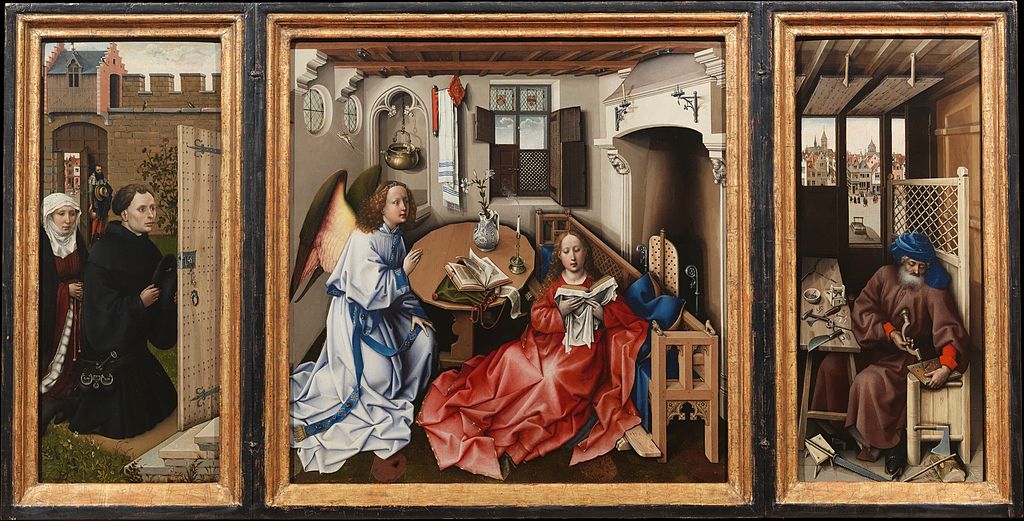Tamely, frail body, abstain today; today
My soul eats twice, Christ hither and away.
She sees him man, so like God made in this,
That of them both a circle emblem is,
Whose first and last concur; this doubtful day
Of feast or fast, Christ came, and went away;
She sees him nothing, twice at once, who is all;
She sees a cedar plant itself, and fall,
Her maker put to making, and the head
Of life at once not yet alive, yet dead;
She sees at once the virgin mother stay
Reclused at home, public at Golgotha;
Sad and rejoiced she's seen at once, and seen
At almost fifty, and at scarce fifteen;
At once a son is promised her, and gone,
Gabriel gives Christ to her, he her to John;
Not fully a mother, she's in orbity,
At once receiver and the legacy;
All this, and all between, this day hath shown,
Th'abridgement of Christ's story, which makes one—
As in plain maps, the furthest west is east—
Of th’angel's Ave, and Consummatum est...
—John Donne, "Upon the Annunciation and Passion Falling upon One Day."
When John Donne wrote this poem in 1608, the feast of the Annunciation fell on Good Friday. This year the Annunciation is weeks before Good Friday, but the contrast that Donne sees between the celebration of the feast and the fasting of Good Friday can easily be applied to our understanding of Lent in general. The way Donne does this is by focusing on the contrasts of the Annunciation and Good Friday and placing them into a broader context—once he has done that, he is able to see the two events not as contradictory, but as parts of the same whole. The fact that the Annunciation and Good Friday emphasize different parts of Christ’s life and Mary’s life does not mean that they are in opposition to each other, but rather that they can be better understood together.
It can be difficult to see how feast days like the Annunciation fit into the context of Lent. Often we treat feast days like a break or an opportunity to eat the desserts that we’ve been so carefully avoiding. If we follow Donne’s logic, this attitude is almost exactly backwards—these feast days, and the Annunciation in particular, are not a break from Lent, but a reminder of why Lent is possible and what celebration we are preparing for. In a very similar way, without the context of Good Friday the Annunciation loses much of its its meaning.
Donne starts his poem focused where most of us are during Lent, on the contrast between doing what can be unpleasant for the body while feeding our souls. By the end of this selection, he is able to bring two apparently contradictory moments into communion, and depict the relationship between the two momentous events in salvation history in one line.

